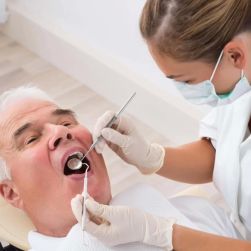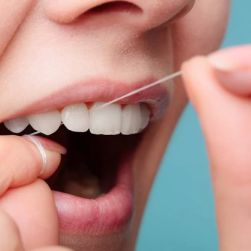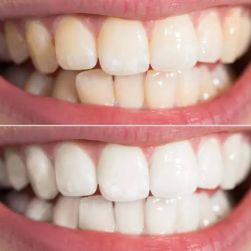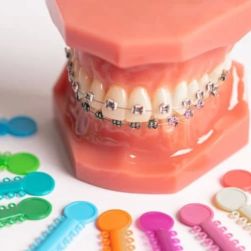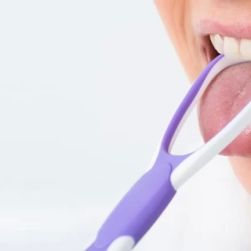Understanding and Preventing Common Dental Issues in Children
As a parent, one of the most important aspects of caring for your child’s overall well-being is ensuring they have a healthy smile. However, when it comes to dental health, many children experience common issues that can cause long-term problems if not addressed early. I remember when my daughter, Lily, had her first dentist appointment; I was both nervous and unsure about what to expect. Little did I know that many of the issues children face with their teeth are preventable with a little guidance and care. In this article, I will share the most common dental issues in children, along with tips to prevent them, based on my own experiences and research. It’s a journey every parent should be prepared for.
1. Tooth Decay: The Silent Culprit
Tooth decay, also known as cavities, is the most prevalent dental problem in children. It occurs when bacteria in the mouth break down sugars from food, producing acids that erode the tooth enamel. This process can lead to cavities if not caught early. I remember noticing Lily’s first tiny cavity, which appeared right before her six-year-old molars started coming in. Her diet of sugary snacks and drinks contributed to this issue, and I didn’t realize the impact it was having until the dentist pointed it out.
To prevent tooth decay, one of the most effective things you can do is ensure your child brushes their teeth at least twice a day. Use a fluoride toothpaste, and encourage them to brush for two minutes each time. Another crucial step is to limit sugary snacks and drinks, especially those that cling to teeth for a long time, like candy and sodas. After meals, if brushing isn't possible, rinsing with water can help wash away food particles.
2. Gum Disease: More Than Just Gums
Gum disease, or gingivitis, is another common dental problem in children that can lead to more severe issues if left untreated. It happens when bacteria build up in the mouth, causing inflammation of the gums. Initially, gum disease may cause redness, swelling, and bleeding of the gums, especially when brushing. I recall when Lily was just beginning to learn how to brush on her own, and she had some bleeding around her gums. It was a sign that she wasn't brushing effectively enough to prevent plaque buildup.
The good news is that gum disease is completely preventable with good oral hygiene. Encourage your child to brush their teeth thoroughly and floss daily to remove plaque from between their teeth and along the gumline. If gum disease progresses into a more serious condition, it can lead to tooth loss and more complex treatments. Regular dental check-ups will help detect any early signs of gum disease.
3. Misaligned Teeth and Bite Problems
Misalignment of teeth, also known as malocclusion, is a common issue in children. This can include overbites, underbites, and crossbites, which can lead to difficulty chewing, speaking, and even cause discomfort. I vividly recall how my son, Jack, had an overbite as a child. It didn’t seem to bother him much, but it became apparent over time that he had trouble closing his mouth properly. His dentist explained that misaligned teeth can sometimes lead to jaw pain, excessive wear on teeth, and difficulty maintaining oral hygiene due to overcrowded teeth.
Early intervention is key in preventing these problems from escalating. Orthodontic treatments, such as braces or retainers, are often used to correct misaligned teeth. If you notice your child has trouble biting or chewing, or if their teeth don’t seem to be aligned properly, consult with a pediatric dentist who can evaluate the situation and recommend the best course of action. Early detection can save a lot of discomfort and expense later on.
4. Thumb Sucking and Its Effects on Teeth
Thumb sucking is a natural reflex for many infants and toddlers, but when it persists beyond a certain age, it can cause problems with tooth development. Thumb sucking can lead to misaligned teeth, particularly an open bite, where the top and bottom teeth don’t meet correctly. My friend’s son, for instance, was a thumb sucker well past the age of three, and by the time he was five, his dentist pointed out that the habit had caused his teeth to shift, creating a gap. While thumb sucking may seem harmless, it’s important to guide your child to stop the habit before it becomes problematic.
If your child continues to suck their thumb after the age of four, it’s time to gently encourage them to stop. You can offer rewards, distractions, or even use orthodontic devices that can help break the habit. For some children, a visit to a pediatric dentist who specializes in children’s oral habits may be beneficial.
5. Early Loss of Baby Teeth
It’s completely normal for children to lose their baby teeth around the age of six, but sometimes, children lose their teeth prematurely due to decay or injury. Early tooth loss can cause problems with the alignment of permanent teeth, potentially leading to future orthodontic treatments. When Lily lost her first tooth early due to decay, we were concerned about how it might affect the growth of her adult teeth. The dentist explained that it’s important to preserve baby teeth for as long as possible to maintain space for the permanent ones.
To prevent premature tooth loss, make sure your child’s teeth are cleaned regularly and avoid sugary foods that can cause decay. If your child loses a baby tooth prematurely, consult with their dentist about possible solutions, such as space maintainers, to ensure the proper growth of adult teeth.
6. Dental Anxiety: Helping Your Child Overcome Fear
Many children experience anxiety or fear when it comes to visiting the dentist, which can make it harder for them to maintain regular check-ups. I can still remember when Jack had his first dental visit—he was terrified, and we struggled to get him into the dentist’s chair. Dental anxiety is a common issue, but it’s important to address it early to ensure your child doesn’t develop a lifelong fear of dental visits.
To help alleviate dental anxiety, try to make dental visits as fun and positive as possible. Use games, toys, or rewards after the visit to create a more enjoyable experience. Talking to your child about what to expect in a calm and reassuring manner can also help ease their fears. Over time, regular visits to the dentist can help your child feel more comfortable and confident in their dental care routine.
Conclusion
Taking care of your child’s dental health is an ongoing process that requires patience, attention, and consistency. From preventing tooth decay to addressing gum disease, misalignment, and habits like thumb sucking, the key to success is early intervention and regular dental visits. By teaching your children good oral hygiene habits and ensuring they visit their dentist regularly, you can help them maintain a healthy smile for years to come.
As a parent, I’ve seen firsthand how much of a difference good dental care can make in a child’s life. With proper education, guidance, and routine care, your child’s teeth can stay healthy, strong, and beautiful as they grow.


